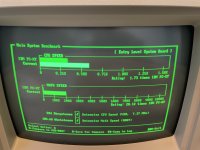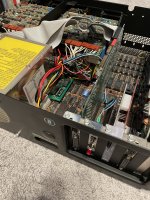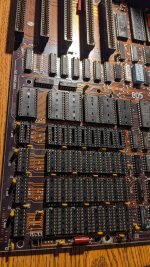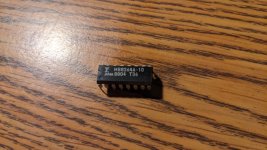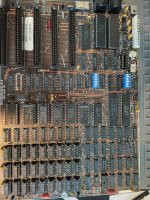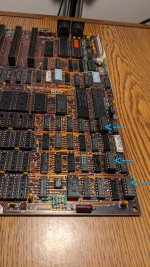View attachment 1033961
OK, so I've been a
very busy boy since I last posted in this thread.
I had some PC-SPRINT PCBs manufactured (pictured above) using Retro Canada's KiCAD / gerber files and have been using one in my 5150 for the past week. I have an NEC V20 CPU and an 8087-2 installed, as well as 150ns RAM. I built my PC-SPRINT with a 21.47727MHz crystal giving a CPU clock speed of 7.16MHz. This is the same as the Tandy 1000 EX and HX, for what it's worth.
I've had zero problems so far and have tested with various games with a CGA and an EGA card. The performance difference is pretty staggering, actually. I've run a whole load of benchmarks and the improvements are in the 50-55% range across the board. I just leave the turbo mode enabled at all times, even when booting - incidentally, cold boot time has been reduced from 1:02 to 43 seconds. The new reset button is handy too.
But it doesn't end there. As others raised some concerns about DMA I also decided to learn some KiCAD and circuit design and work on my own "PC-SPRINT v2". These arrived from PCBWay today and I have assembled one:
View attachment 1033960
..and installed it:
View attachment 1033962
The new version adds some additional logic to incorporate the DMA signals
previously identified by Sergey Kiselev:
View attachment 1033963
I initially built this with a rather ambitious 24MHz crystal but the PC would freeze instantly with it enabled (even at the DOS prompt) so I have downgraded to a 22.1184MHz crystal (7.37MHz CPU clock) and that has worked perfectly fine in my limited testing so far.
Note that I haven't hooked up the DMA side of things yet but that's next on the todo list. I think I found the right places on the motherboard based on the Technical Reference but I want to confirm with an oscilloscope before I do anything too hasty, especially as it's all working fine so far anyway.
I documented the whole project over on GitHub for future generations who may stumble across this and get intrigued like I (and others) did:
https://github.com/reesclissold/pc-sprint
It's very much a work in progress but I've added all the details on the benchmarks I've run so far as well as all of the files for the v2. There are probably a few errors in there as I'm still learning but I felt it made sense to put all my findings in one place.

